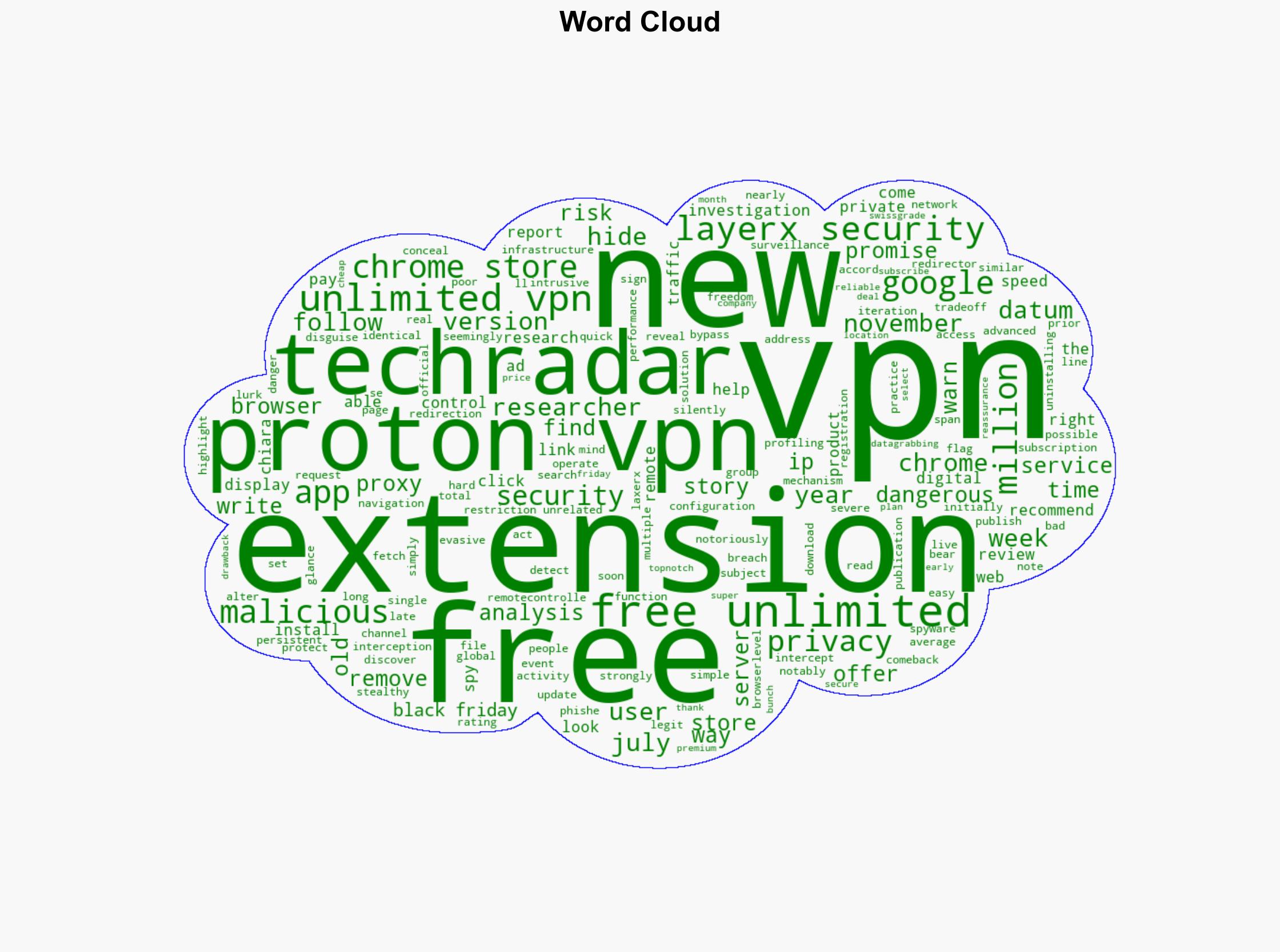Malicious free VPN extension makes a comeback – TechRadar
Published on: 2025-11-20
AI-powered OSINT brief from verified open sources. Automated NLP signal extraction with human verification. See our Methodology and Why WorldWideWatchers.
Intelligence Report:
1. BLUF (Bottom Line Up Front)
With moderate confidence, the most supported hypothesis is that the resurgence of the malicious free VPN extension is a coordinated effort by a sophisticated threat actor group to conduct widespread surveillance and data harvesting. Immediate action is recommended to enhance public awareness and improve detection mechanisms on platforms like the Chrome Web Store.
2. Competing Hypotheses
Hypothesis 1: The resurgence of the malicious VPN extension is orchestrated by a sophisticated threat actor group aiming to conduct mass data surveillance and harvesting.
Hypothesis 2: The reappearance is due to a lack of stringent monitoring and enforcement by platform providers, allowing opportunistic cybercriminals to exploit these gaps.
Hypothesis 1 is more likely due to the advanced evasive techniques and infrastructure changes noted in the new iteration, suggesting a level of sophistication beyond opportunistic attacks.
3. Key Assumptions and Red Flags
Assumptions: It is assumed that the malicious activities are intentional and coordinated. The extension’s removal from the store indicates awareness by platform providers.
Red Flags: The extension’s ability to evade detection and its advanced infrastructure suggest potential state-sponsored involvement or a highly skilled cybercriminal group.
Deception Indicators: The legitimate appearance and positive reviews of the extension may be part of a deliberate deception strategy to build trust and increase downloads.
4. Implications and Strategic Risks
The continuation of such malicious activities poses significant risks, including:
- Cybersecurity Threats: Increased risk of data breaches and identity theft for users.
- Informational Risks: Potential for misinformation or manipulation if data is used for targeted influence operations.
- Economic Risks: Potential financial losses for affected individuals and companies due to data breaches.
5. Recommendations and Outlook
- Actionable Steps: Enhance public awareness campaigns about the risks of free VPNs. Encourage platform providers to improve monitoring and enforcement mechanisms.
- Best Scenario: Successful mitigation through public awareness and improved detection, leading to a decrease in malicious extension downloads.
- Worst Scenario: Widespread data breaches and exploitation due to continued use of malicious extensions.
- Most-likely Scenario: Continued cat-and-mouse dynamics between threat actors and platform security teams, with periodic successes in mitigation.
6. Key Individuals and Entities
No specific individuals are identified in the report. The primary entities involved are the threat actor group behind the extension and the platform providers like Google responsible for the Chrome Web Store.
7. Thematic Tags
Structured Analytic Techniques Applied
- Adversarial Threat Simulation: Model and simulate actions of cyber adversaries to anticipate vulnerabilities and improve resilience.
- Indicators Development: Detect and monitor behavioral or technical anomalies across systems for early threat detection.
- Bayesian Scenario Modeling: Quantify uncertainty and predict cyberattack pathways using probabilistic inference.
- Network Influence Mapping: Map influence relationships to assess actor impact.
Explore more:
Cybersecurity Briefs ·
Daily Summary ·
Support us





